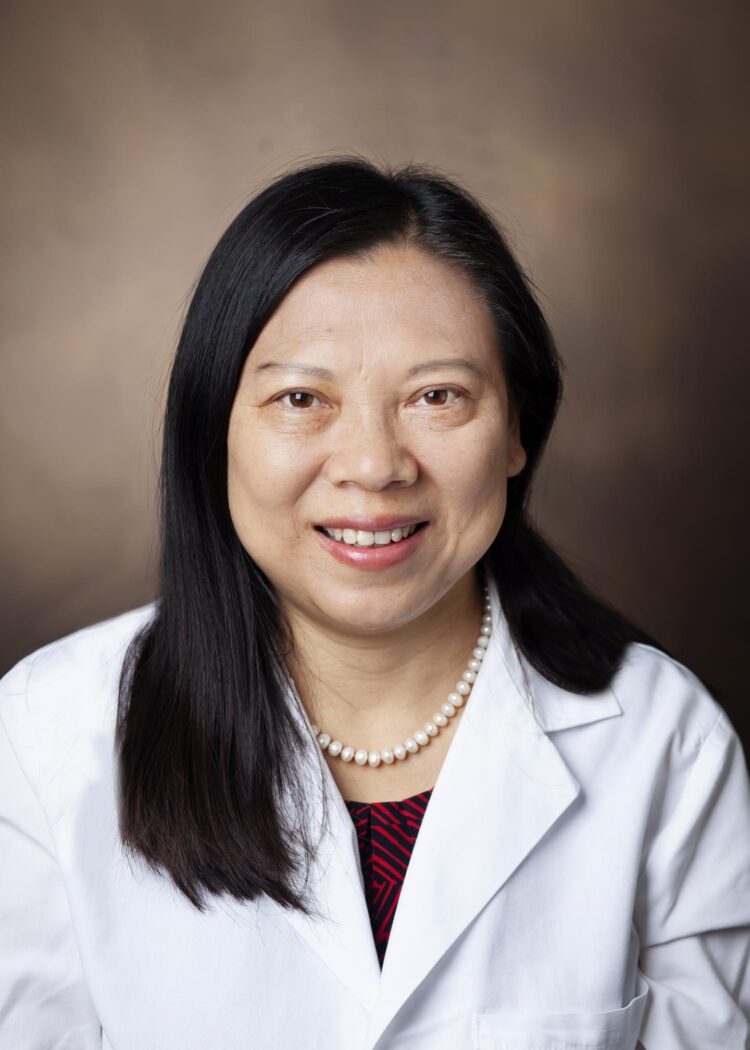Researchers at Vanderbilt University Medical Center (VUMC) have identified a common mechanism underlying a spectrum of epilepsy syndromes and neurodevelopmental disorders, including autism, that are caused by variations in a gene encoding a vital transporter protein in the brain.
Their findings, reported last month in the journal Brain, suggest that boosting transporter function via genetic or pharmacological means could be beneficial in treating brain disorders linked to these genetic variations.
“This points (to) a clear direction of treating a wide spectrum of neurodevelopmental disorders, from various epilepsy syndromes (and) autism to neurodevelopmental delay and intellectual disabilities, caused by the pathological variants in this gene,” said Jing-Qiong (Katty) Kang, MD, PhD, associate professor of Neurology and Pharmacology, and the paper/s corresponding author.
“The disorders associated with the gene mutations are rare and there is no effective treatment available,” Kang said. “If … the clinical syndromes we see are the tip of an iceberg, we now know what is going on underneath, and we start to know how to correct the problems.”
The gene, SLC6A1, encodes the GABA transporter 1 (GAT-1) at the axonal termini (ends) of neurons (nerve cells) and astrocytes (star-shaped glial cells that support and protect neurons). GAT-1 removes or “reuptakes” GABA, the major inhibitory neurotransmitter, from the synaptic cleft between two neurons.
GABA regulates nerve signals throughout the brain and plays a key role in normal brain development. Reuptake enables the brain to precisely regulate the supply of the neurotransmitter in concert with GABAA receptors, ion channels that bind it.
Kang and her colleagues have extensively studied GABAA receptors and are world
leaders in determining how disrupted GABA signaling can affect brain function and development.
SLC641 variants previously have been associated with a spectrum of epilepsy syndromes, autism and impaired cognition. But until now scientists did not know how these variants could cause such a broad range of brain disorders.
Using high-throughput assays such as flow cytometry and a radioactive labeling technique for measuring GABA reuptake by neurons and astrocytes, the VUMC researchers determined the impact of 22 different variants of SLC6A1 on GAT-1 function in several types of nerve cells derived from patients with neurodevelopmental disorders, epilepsy and autism.
The work was validated in patient-induced pluripotent stem cells that were “reprogrammed” to form neurons and astrocytes.
The researchers found that disease-causing variants were associated with misfoldings of the GAT-1 protein that led to its degradation and which reduced its expression on cell surfaces. Less GAT-1, in turn, lowered GABA reuptake by nerve cells and astrocytes and disrupted neurotransmitter function.
“This is the first large-scale study on SLC6A1 pathological variants,” Kang said. “Our work indicates that SLC6A1-mediated disorders are good candidates for pharmacological as well as gene therapy that restore the functional transporter at the cell surface.”
A compound identified at VUMC that corrects GAT-1 function in mouse models and cells from patients with urea cycle disorder is now being tested in a clinical trial. The inherited disease causes a buildup of ammonia in the bloodstream that can damage the brain and may be fatal.
Another potential approach is the use of antisense oligonucleotides, short, synthetic pieces of genetic material that may increase expression of the normal, “wild-type” GAT-1 protein.
Kang said the research could not have been done without the help of two “hero” mothers of children with rare genetic disorders: Amber Freed, founder and CEO of the Denver-based advocacy group SLC6A1 Connect; and Terry Jo Bichell, PhD, founder and director of Nashville-based COMBINEDBrain, which supports brain research.
“I have been very lucky and privileged to work with them,” Kang said. “They have taught me so much along the way and inspired me to do meaningful research.”
“She loves kids with SLC6A1 as her own and selflessly works to improve their lives with the urgency of a mother,” Freed responded. “Throughout this journey, Katty has been a loving person, inquisitive scientist and pillar of strength.”
“That empathy kept her discoveries progressing through the pandemic,” Bichell added. “She would ride her bicycle to the lab and care for the mouse and cell models at night, on weekends and even holidays … Dr. Kang is doing basic science that will translate to real treatments for real children she has met–and hugged.”
###
The research was supported by SLC6A1 Connect, Taysha Gene Therapies, the Charles C. Gates Center Director’s Innovation Fund, the Stoddard family, and by National Institutes of Health grants NS082635, GM128915, CA227483 and MH116901.
Media Contact
Craig Boerner
[email protected]
Related Journal Article
http://dx.





